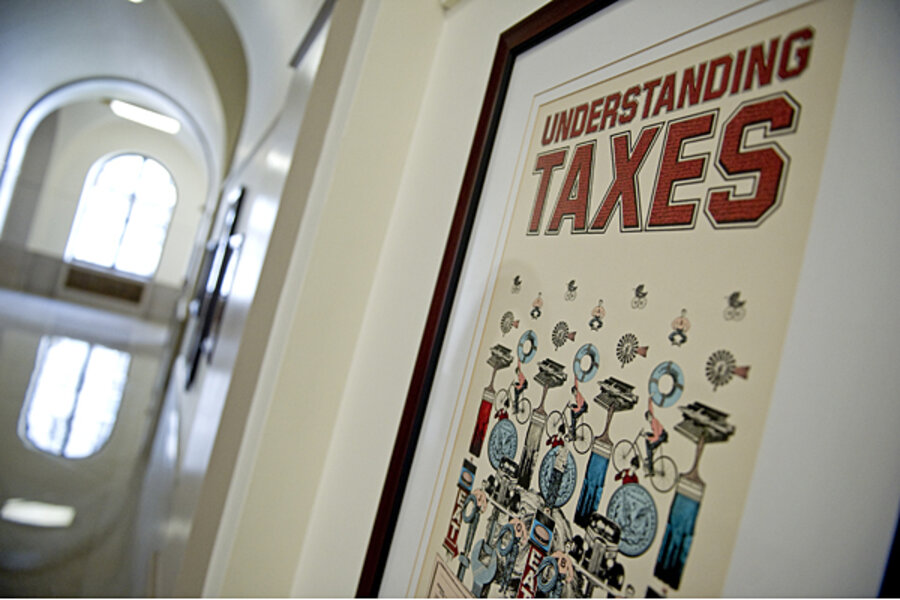Investment taxes: How do they work?
Loading...
Johnny writes in:
The one thing that has kept me from diving into investing is fear of taxes. Every time I read about taxes and investments, it seems really, really complicated and I’m worried I’m going to be stuck with a big tax bill at the end of a given year even if I think I did everything smartly.
That’s an understandable worry. Investment taxes can be a bit difficult to swallow at times, but there are a few rules you can follow to make things easier for you.
My first suggestion is to use a solid tax preparation software package when you do your income taxes. A good software package like TurboTax will walk you through everything you need to do in terms of filing your taxes correctly. You’ll avoid making significant errors, so you can be confident about the taxes you file.
The second step I’d suggest is to keep careful track of every dime you invest. Note the date that you invested the money, what you invested it in, and how many shares of that investment you were able to purchase. I use a spreadsheet for this very task.
The third step – and this is probably the most important one – is to keep very careful track of every dime that’s paid out from your investments. If the investment pays out a dividend, record it. If the investment pays out a capital gains distribution, record it. Any time you receive cash as a result of an investment, you need to make absolutely sure that you write it down.
Now, for many investments, people choose to re-invest the proceeds. That’s a reasonable choice, but it’s also the choice that can get people into tax trouble.
Let’s say you have $50,000 invested in a mutual fund. The fund decides to pull out of several investments, believing them to be at their peak. The fund then has to pay out a distribution. Let’s say they’re paying out a distribution that’s worth 20% of the face value of their shares, which means you’re getting $10,000. If you just re-invest that money immediately, as many people do, you now own some more shares of the fund, but you’re also on the hook for $10,000 in additional income on your tax form, which can ding you pretty hard if you’re not prepared for it.
Investments that do this kind of distribution quite often are referred to as “high turnover” funds. If you’re investing outside of a retirement account, I’d avoid these investments like the plague. (If you’re investing inside of a retirement account, it really doesn’t matter because the taxes are all deferred.)
What’s an example of an investment with very low or no turnover? Individual stocks have no turnover, as you just own them and hold them until you sell them. Pieces of land have no turnover for the same reason. Index funds usually have very low turnover, like the Vanguard Total Stock Market Index.
Some investments earn dividends, which work much like interest in a savings account. Dividends are either taxed like ordinary income or, if you’ve held the investment for a significant period, like a long-term capital gains (meaning at a lower rate than ordinary income). Again, these are often reinvested, so you’ll need to keep track of these carefully.
My solution is that whenever I reinvest a dividend or distribution, I put a bit of money in a savings account to cover the taxes on that dividend or distribution. Usually, my investment house sends me a notice whenever a distribution is paid out and reinvested. When that happens, I’ll just move a bit of money from a checking account into a savings account to cover the taxes there. At some point, the taxes might be big enough for me to have to come up with a different solution, but I’m certainly not there yet!
When you actually sell an investment and reap more money than you paid into it, that difference is a capital gain. You’re going to owe taxes on it. If you’ve held that investment for more than a year, it’s a long-term capital gain, meaning you’ll get a lower tax rate on it than your normal income. If you’ve not held the investment for that long, then it’s a short-term gain, which means you pay normal income taxes on it.
For that, I usually put aside 40% of the proceeds from any investment I sell for taxes. If I buy something for $1,000 and sell it for $2,000, I’m going to put aside $400 for the taxes on that gain. I might not end up owing that much, but having more than enough to cover the taxes is better than not having quite enough to cover them.
Like I said at the beginning, using a good tax software package makes this all really easy, provided you kept good records along the way. I have bought and sold many investments and had many distributions and dividends come my way and I’ve never had an issue thanks to good record-keeping and a good tax preparation package.
The post Investments, Taxes, and Worry appeared first on The Simple Dollar.








